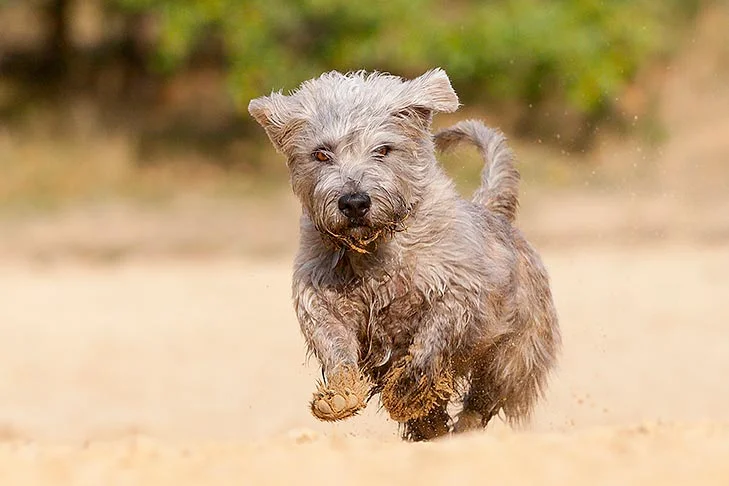Glen of Imaal Terrier
Average sizes and life
expectancy of the breed.
Height
12.5-14 inches
Weight
32-40 pounds
Life Expectancy
10-15 years
Breed Traits & Characteristics
About the Breed

Owning a dog is not just a privilege; it’s a responsibility. They depend on us for, at minimum, food and shelter, and deserve much more. When you take a dog into your life, you need to understand the commitment that dog ownership entails.
 Health
Health
Recommended Health Tests From the National Breed Club:
- Hip Evaluation
- Progressive Retinal Atrophy (PRA) crd3 DNA Test
- Elbow Evaluation
- Ophthalmologist Evaluation
 Grooming
Grooming
 Exercise
Exercise
 Training
Training
 Nutrition
Nutrition
History
The lonely and rugged Glen of Imaal in the hilly County Wicklow is where the strong terriers known as Glens call home. Old-time farmers struggled to make a livelihood off the barren land, and they expected their dogs to do the same.
Glens were bred to hunt badgers, but they also helped out around the farm with numerous odd duties. Glens were allegedly used in kitchens to turn the meat over an open flame in a hamster wheel device, hence the term “Turnspit Dog” that has stuck with them. The Glen was perfectly suited for this thanks to its extremely individual bowed front legs, well-padded loin, and muscular hindquarters. These tough canines did their work in this rural part of Ireland for several hundred years, undetected by everyone but those who loved them.
There are scattered tales of Glens traveling to America with their owners as early as 1930, but the breed did not take root in the US until the 1980s when a number of devoted breeders and fanciers brought foundation stock over from Ireland and the UK. These pioneers established the Glen of Imaal Terrier Club of America in 1986.



